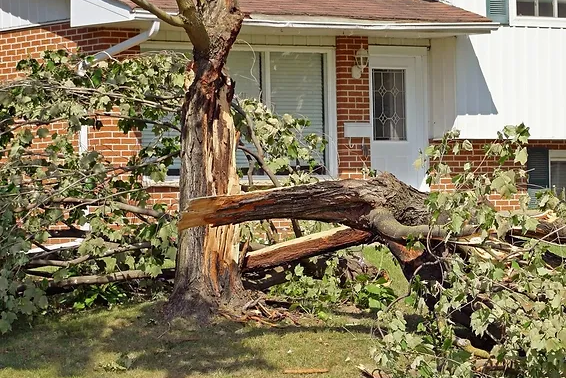
By definition, a hazardous tree is one that has a defect that could cause it to fall on a person or structure and inflict injury or damage. A hazardous tree is a safety threat, and no property owner wants to assume that risk.
When you work with professional arborists, they will deal with the hazardous tree with a systematic approach. They’ll conduct a hazard assessment and form a plan to either remove a part or all of the tree in the safest way possible.
There are three central steps to determining if you have a hazardous tree on your property:
Examining the Tree’s Crown
First, the arborist will look at the upper parts — the crown area. He or she will examine the foliage for vigor and overall health. Discolored leaves or a lack of leaf coverage can point to a health issue. The arborist will see if any dead branches pose a threat. Also, any branches that cross and rub together may need to be removed. If the potentially hazardous tree was previously pruned incorrectly, it could have weakened the structure, making it more dangerous. The arborist will look for signs of past pruning during the assessment.
Checking the Tree’s Trunk
Moving down the tree, it is essential to look for signs of decay. If there are no exterior signs, such as fungal growth, the arborist may use a drilling or boring method to test the health of the trunk’s wood. Another sign of a hazardous tree is a forked trunk, with one fork growing outward instead of upward. This can throw the tree off balance and is a sign of instability. Any cracking or open wounds on the trunk are also potential indications of problems that extend to the root system.
Inspecting the Tree’s Root System
Root decay and disease is one of the main causes of a hazardous tree. When looking for root decay, arborists will inspect the ground around the base. If there is fungal growth, such as small mushrooms, they may dig down to the root system and extract a sample of the wood for further examination. Any construction or excavation that takes place within the tree’s root system also can destabilize the tree, especially if the roots were severed or dug up. Not only would this make it easier for a strong wind to knock it down, it opens up the root system to disease from outside organisms.
Schedule a Professional Tree Hazard Assessment
Do you suspect any trees on your property pose a threat? Get a professional tree hazard assessment from a trained arborist. He or she will conduct a complete inspection and give you a detailed report on how you should proceed to make sure your property is safe.
Call Rivendell Tree Experts today — our certified arborists will take care of the hazardous tree at your home or business.



